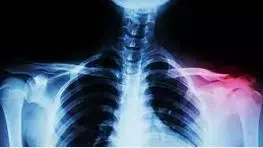- Home
- Medical news & Guidelines
- Anesthesiology
- Cardiology and CTVS
- Critical Care
- Dentistry
- Dermatology
- Diabetes and Endocrinology
- ENT
- Gastroenterology
- Medicine
- Nephrology
- Neurology
- Obstretics-Gynaecology
- Oncology
- Ophthalmology
- Orthopaedics
- Pediatrics-Neonatology
- Psychiatry
- Pulmonology
- Radiology
- Surgery
- Urology
- Laboratory Medicine
- Diet
- Nursing
- Paramedical
- Physiotherapy
- Health news
- Fact Check
- Bone Health Fact Check
- Brain Health Fact Check
- Cancer Related Fact Check
- Child Care Fact Check
- Dental and oral health fact check
- Diabetes and metabolic health fact check
- Diet and Nutrition Fact Check
- Eye and ENT Care Fact Check
- Fitness fact check
- Gut health fact check
- Heart health fact check
- Kidney health fact check
- Medical education fact check
- Men's health fact check
- Respiratory fact check
- Skin and hair care fact check
- Vaccine and Immunization fact check
- Women's health fact check
- AYUSH
- State News
- Andaman and Nicobar Islands
- Andhra Pradesh
- Arunachal Pradesh
- Assam
- Bihar
- Chandigarh
- Chattisgarh
- Dadra and Nagar Haveli
- Daman and Diu
- Delhi
- Goa
- Gujarat
- Haryana
- Himachal Pradesh
- Jammu & Kashmir
- Jharkhand
- Karnataka
- Kerala
- Ladakh
- Lakshadweep
- Madhya Pradesh
- Maharashtra
- Manipur
- Meghalaya
- Mizoram
- Nagaland
- Odisha
- Puducherry
- Punjab
- Rajasthan
- Sikkim
- Tamil Nadu
- Telangana
- Tripura
- Uttar Pradesh
- Uttrakhand
- West Bengal
- Medical Education
- Industry
Patients of Medial clavicle fractures get relief by 1 year but have high mortality: Study

Recent research has suggested that medial clavicle fractures have favorable functional outcomes and pain relief at minimum 1-year follow-up among those patients who survive the trauma, but a high proportion will die within 3 years of the injury. These findings have been put forth in Clinical Orthopaedics and Related Research.
Medial clavicle fractures are uncommon, occurring in older and multiply injured patients. The management of these fractures and the factors that predispose toward poor outcomes are controversial. Furthermore, the functional outcomes of treatment are not well characterized or correlated with fracture patterns.
A team of researchers recently undertook the current study with the aims -(1) To determine minimum 1-year functional outcomes using QuickDASH scores and pain scores after medial clavicle fractures and (2) to identify factors associated with these outcome variables.
In an institutional review board–approved, retrospective study, the team identified adult patients with medial clavicle fractures at two tertiary care referral centers in a single metropolitan area in the United States from January 2010 to March 2019. Initial query identified 1950 patients with clavicle fractures, from which 74 adult patients with medial clavicle fractures and at least 1 year of follow-up were identified. Demographic characteristics, fracture characteristics, and clinical and radiographic union as assessed by plain radiography and CT were collected through record review.
Twenty-nine patients were treated nonoperatively and two patients underwent open reduction internal fixation. Sixty-eight percent (21 of 31) of the included patients also had radiographic follow-up at least 6 weeks postoperatively; two patients had persistent nonunion at a mean of 5 ± 3 years after injury. Primary response variable was the QuickDASH score at a minimum of 1 year (median [range] 5 years [2 to 10]). Secondary response variable was the pain score on a 10-point Likert scale.
Results highlighted some key facts.
- The mean QuickDASH score was 12 ± 15, and the mean pain score was 1 ± 1 at a mean of 5 ± 3 years after injury.
- The mortality rate of the cohort was 15% (11 of 74) at 1 year, 22% (16 of 74) at 3 years, and 34% (25 of 74) at 5 years after injury.
- With the numbers available, no factors were associated with the QuickDASH score or pain score, but it is likely we were underpowered to detect potentially important differences.
"This likely reflects both the frailty of a predominantly older patient population and the fact that these often are high-energy injuries. The outcome measures in our cohort were not associated with fracture displacement, shortening, or comminution; however, our sample size was underpowered on these points, and so these findings should be considered preliminary. Further studies are needed to determine the subset of patients with this injury who would benefit from surgical intervention."the team concluded.
For full article, follow the link: 10.1097/CORR.0000000000001839
Source : Clinical Orthopaedics and Related Research
Dr Satabdi Saha (BDS, MDS) is a practicing pediatric dentist with a keen interest in new medical researches and updates. She has completed her BDS from North Bengal Dental College ,Darjeeling. Then she went on to secure an ALL INDIA NEET PG rank and completed her MDS from the first dental college in the country – Dr R. Ahmed Dental College and Hospital. She is currently attached to The Marwari Relief Society Hospital as a consultant along with private practice of 2 years. She has published scientific papers in national and international journals. Her strong passion of sharing knowledge with the medical fraternity has motivated her to be a part of Medical Dialogues.
Dr Kamal Kant Kohli-MBBS, DTCD- a chest specialist with more than 30 years of practice and a flair for writing clinical articles, Dr Kamal Kant Kohli joined Medical Dialogues as a Chief Editor of Medical News. Besides writing articles, as an editor, he proofreads and verifies all the medical content published on Medical Dialogues including those coming from journals, studies,medical conferences,guidelines etc. Email: drkohli@medicaldialogues.in. Contact no. 011-43720751


